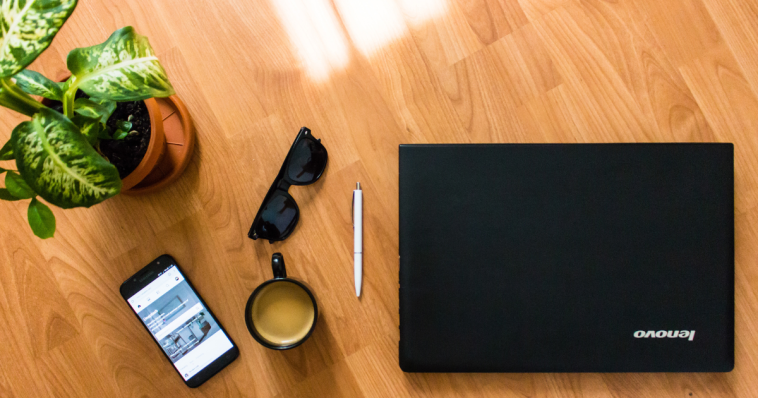The Lenovo ThinkBook Plus Gen 6 is a bold step forward in the evolution of dual-screen laptops, blending innovation with productivity. Designed for business professionals and creative users, this laptop introduces a unique combination of a traditional touchscreen display and an E-Ink panel, offering a versatile experience for multitasking, note-taking, and efficiency. With a premium build, high-performance hardware, and modern connectivity options, the ThinkBook Plus Gen 6 aims to redefine how users interact with their devices. This review delves into its design, display, performance, battery life, and overall usability to assess its real-world impact.
Pros of Lenovo ThinkBook Plus Gen 6
1. Design and Build Quality
The ThinkBook Plus Gen 6 boasts a sleek and modern design. The aluminum chassis offers durability while remaining lightweight. The aesthetic is minimalist yet professional, making it ideal for business users. One of its standout features is the secondary E-Ink display on the lid, which enables users to read documents, take notes, and view notifications without opening the laptop.
The hinge mechanism is smooth yet sturdy, allowing users to open the laptop with one hand. The backlit keyboard offers a comfortable typing experience, while the large trackpad ensures precise navigation. Lenovo has also integrated a fingerprint scanner into the power button for security and convenience.
2. Dual-Screen Innovation
One of the most striking aspects of the ThinkBook Plus Gen 6 is its dual-screen functionality. The primary display is a 13.3-inch FHD+ IPS touchscreen, offering vibrant colors and sharp details. The secondary E-Ink display on the laptop’s lid measures 12 inches and supports stylus input, making it perfect for note-taking, reading, or managing notifications.
The E-Ink screen reduces eye strain, allowing users to read for extended periods without discomfort. Additionally, it consumes significantly less power than a traditional display, contributing to improved battery efficiency. Lenovo has also optimized software integration to make the E-Ink panel more responsive and useful for multitasking professionals.
3. Performance and Hardware
Under the hood, the ThinkBook Plus Gen 6 is powered by Intel’s latest 12th Gen Core processors, offering improved speed and efficiency. Configurations are available with Intel Core i5 and i7 options and Intel Iris Xe graphics, which deliver sufficient power for business applications, light creative work, and multitasking.
The laptop supports up to 16GB LPDDR5 RAM and 1TB PCIe Gen 4 SSD storage, ensuring smooth performance and fast load times. While it may not be a gaming powerhouse, it seamlessly handles productivity tasks, video conferencing, and content consumption.
4. Battery Life and Charging
The ThinkBook Plus Gen 6 features a 56Wh battery, which provides up to 10 hours of battery life, depending on usage. The E-Ink screen significantly reduces power consumption, especially when used instead of the primary display for reading or note-taking.
Lenovo’s Rapid Charge technology allows the laptop to recharge up to 80% in an hour, ensuring minimal downtime for busy professionals. The efficient power management ensures that users can get through an entire workday without needing to recharge constantly.
5. Connectivity and Ports
Lenovo has equipped the ThinkBook Plus Gen 6 with a wide array of connectivity options, including:
- 2 x USB-C (Thunderbolt 4) ports for fast data transfer and external display support
- 2 x USB-A 3.2 Gen 1 ports for legacy peripherals
- HDMI 2.1 for external monitor connectivity
- 3.5mm audio jack for headphones or external speakers
- Wi-Fi 6E and Bluetooth 5.2 for seamless wireless connectivity
These ports ensure that users can connect various accessories, making the laptop a versatile choice for professionals who need multiple connectivity options.
6. Software and User Experience
The ThinkBook Plus Gen 6 runs on Windows 11 Pro, optimized for business and productivity. The E-Ink display has dedicated software that allows users to customize widgets, read emails, and even edit PDFs directly from the lid.
Security features such as Windows Hello facial recognition, a privacy shutter for the webcam, and Lenovo’s ThinkShield security suite further enhance data protection. Lenovo has also optimized AI-powered noise cancellation for video calls, ensuring clear meeting communication.
Cons of Lenovo ThinkBook Plus Gen 6
1. E-Ink Display Limitations
Although the secondary e-ink display is a noteworthy and innovative feature of the Lenovo ThinkBook Plus Gen 6, it does come with certain limitations that potential users should be aware of. The display is monochrome, which means it can only show shades of black and white, lacking the vibrant colors found in traditional screens. Additionally, the refresh rate is relatively slow, making it less suitable for dynamic tasks that require quick visual updates. Consequently, this display is primarily designed for static content, such as reading documents and taking notes, rather than tasks demanding fast-paced interaction. Users may find that the e-ink display’s response time is significantly slower than standard displays, hindering the overall user experience.
2. Higher Price Tag
The Lenovo ThinkBook Plus Gen 6 is positioned as a premium ultrabook, primarily due to its unique dual-screen setup and a range of high-end features that enhance its functionality. While it undoubtedly offers excellent performance and innovative capabilities, the higher price point may deter budget-conscious buyers looking for more economical options. For those mindful of their spending, numerous other ultrabooks on the market provide solid performance and features at a more accessible price, making them a more attractive choice for individuals with financial constraints.
3. Limited Software Optimization
One of the challenges users may encounter with the ThinkBook Plus Gen 6 is that not all applications are optimized to take full advantage of the e-ink display. This lack of optimization can lead to various usability issues, as some software may not function as intended on the secondary screen. Users might find it difficult to seamlessly integrate specific workflows that rely on the e-ink display, which could lead to frustration when trying to utilize the dual-screen setup effectively. As a result, those who depend on specialized applications may need to consider whether their software will work well with this unique display configuration.
4. Bulkier than Standard Ultrabooks
Despite being designed with a lightweight approach, the dual-screen setup of the Lenovo ThinkBook Plus Gen 6 makes it somewhat bulkier compared to traditional ultrabooks that typically feature a single display. This added bulk may be a consideration for users who prioritize portability and ease of transport. Some individuals may find that the extra weight and dimensions make it less convenient to carry around, particularly when compared to slimmer alternatives designed for maximum portability. This could be a significant factor for students or professionals who frequently travel and need a device to slip into a backpack or briefcase easily.
5. No Dedicated GPU
While the Lenovo ThinkBook Plus Gen 6 performs admirably for general productivity tasks such as word processing, web browsing, and light multitasking, it is essential to note that it lacks a dedicated graphics processing unit (GPU). This absence means the laptop is unsuited for intensive gaming or professional-level video editing, often requiring more robust graphics capabilities. Users looking to engage in graphics-intensive activities may find that the integrated graphics do not meet their performance needs, thus limiting the laptop’s appeal to a broader audience who may have such requirements.
Top 5 Competitors of the Lenovo ThinkBook Plus Gen 6
The Lenovo ThinkBook Plus Gen 6 stands out with its innovative dual-screen design, combining a traditional laptop display with an E Ink screen for improved productivity. However, it faces stiff competition from other high-end businesses and hybrid laptops. Here are its top five competitors and what makes them strong alternatives.
1. Dell XPS 13 Plus
Pros:
- Stunning 13.4-inch OLED touchscreen with a near-borderless design
- Powerful 12th and 13th Gen Intel Core processors
- Premium build with a futuristic keyboard and haptic touchpad
- Long battery life and excellent performance for business users
Cons:
- Limited port selection (only USB-C)
- No traditional function keys, which may take time to adjust to
The Dell XPS 13 Plus competes with the ThinkBook Plus Gen 6 by offering a sleek, ultra-modern design with high-end performance. While it lacks the secondary E Ink screen, it makes up for it with a vibrant OLED display and superior processing power.
2. Microsoft Surface Laptop Studio 2
Pros:
- Versatile 2-in-1 form factor with a high-resolution 14.4-inch touchscreen
- Powerful Intel Core i7 and NVIDIA GPU options for creative professionals
- Exceptional build quality and premium materials
- Surface Pen support for note-taking and design work
Cons:
- Higher price point compared to competitors
- Bulkier than traditional ultrabooks
Microsoft’s Surface Laptop Studio 2 is a strong competitor due to its flexible design and powerful specs. Unlike the ThinkBook Plus Gen 6, it doesn’t feature an E Ink display, but it does cater to professionals who need a convertible laptop with a robust touchscreen.
3. HP Spectre x360 14
Pros:
- Gorgeous 13.5-inch OLED display with 3:2 aspect ratio for better productivity
- Strong Intel Core processors with efficient performance
- Convertible design with pen support
- Premium aesthetics and solid build quality
Cons:
- Slightly expensive for the specifications
- Can get warm under heavy workloads
The HP Spectre x360 14 offers a convertible design similar to the Lenovo ThinkBook Plus Gen 6, appealing to business professionals who need flexibility. Its OLED display and pen support provide a premium touch for those who need an excellent display for work and creativity.
4. ASUS ZenBook Duo 14 (UX8402)
Pros:
- Dual-screen setup with ScreenPad Plus for multitasking
- High-end Intel Core processors and solid performance
- Stylus support for creative work
- Excellent build quality with a compact design
Cons:
- The second screen affects battery life
- Keyboard layout can take time to get used to
The ASUS ZenBook Duo 14 is one of the closest competitors to the Lenovo ThinkBook Plus Gen 6 due to its secondary touchscreen, which enhances productivity. However, it offers a more integrated second display than an E Ink panel, making it a strong choice for creatives and multitaskers.
5. Apple MacBook Air M2
Pros:
- Exceptional battery life with Apple’s M2 chip
- Fanless design for silent operation
- Stunning Retina display with True Tone
- Ultra-portable with premium build quality
Cons:
- Limited port selection (only USB-C and MagSafe)
- macOS may not be suitable for all business applications
While the MacBook Air M2 doesn’t feature a secondary screen like the ThinkBook Plus Gen 6, it competes in portability, battery life, and overall build quality. It is a strong alternative for business professionals who prefer macOS over Windows.



